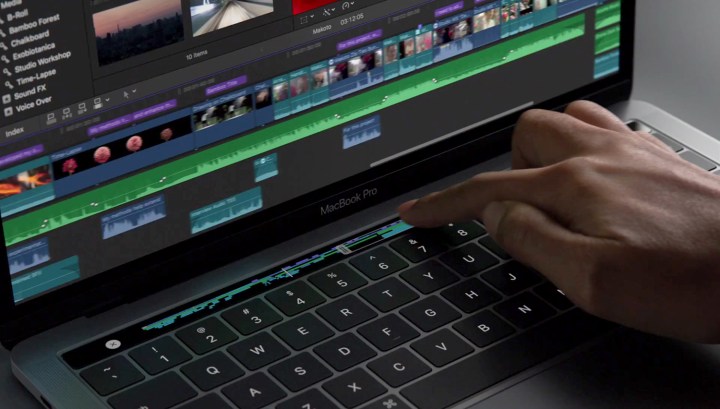
Apple executives aren’t oblivious to those concerns, and they didn’t develop the new MacBook Pro machines in a vacuum. There were conscious decisions made about each and every aspect of their design, and Apple Vice President of Worldwide Marketing Phil Schiller spent some time talking to the Independent about those decisions and the concerns voiced by Apple customers.
When asked about all of the noise surrounding the new machines, Schiller said, “There has certainly been a lot of passionate dialogue and debate about the new MacBook Pro. Many things have impressed people about it, and some have caused some controversy. I hope everyone gets a chance to try it for themselves and see how great the MacBook Pro is. It is a really big step forward and an example of how much we continue to invest in the Mac. We love the Mac and are as committed to it, in both desktops and notebooks, as we ever have been.”
Of course, that’s what Apple would say, no matter the response to the MacBook. Apple isn’t shy about making controversial and unpopular decisions, an example of which is the removal of the headphone jack from the recently released iPhone 7. But has the strength of the negative reaction surprised Schiller? Apparently so — at least a little bit: “To be fair, it has been a bit of a surprise to me. But then, it shouldn’t be. I have never seen a great new Apple product that didn’t have its share of early criticism and debate — and that’s cool. We took a bold risk, and, of course, with every step forward there is also some change to deal with. Our customers are so passionate, which is amazing.”
While it’s possible to argue that some of the design choices were poor, like making the notebooks so incredibly thin at the expense of expandability and battery life, some might make sense when you consider the bigger picture. For example, Schiller justifies retaining the 3.5mm headphone jack in the MacBook Pro because the machines don’t connect only to headphones. They’re professional-grade machines that need to be connect edto audio gear like studio monitors and amps that don’t currently have any other way to connect.
Another change that wasn’t well-received by MacBook fans but that did yield an explanation from Schiller is the removal of the SD card slot from the MacBook Pro. According to the Apple exec, the slot is cumbersome and limits the options for users — why not CompactFlash, for example? — and there are also more cameras providing wireless transfer in any event. It’s better, says Schiller, to use a USB card reader that provides good performance along with supporting other formats.
Some of Schiller’s accounting might not add up so neatly. For example, he says that Siri in MacOS doesn’t support invoking by voice (“Hey Siri”) because that would require different electronics and wouldn’t be supported when a machine is asleep. Of course, Windows 10’s Cortana supports “Hey Cortana” functionality that works well with a wide variety of machines, and so while the lack of sleep responsiveness is a valid concern with PCs, generally speaking, Schiller’s answer might fall a little flat for some.
Schiller also covers the development of the Touch Bar, which he considers a natural progression of the platform. He also touts the new MacBook Pro’s thinness and lightness as being the result of some advances in engineering. In the end, the entire interview provides a nice look into the minds of Apple executives in demonstrating how such an iconic product can be so dramatically altered in spite of the potential for customer backlash.
Editors' Recommendations
- The XPS 16 is fighting an uphill battle against the MacBook Pro
- A new wave of powerful laptops rises to challenge the MacBook Pro
- The biggest threat to the MacBook this year might come from Apple itself
- Why you should buy a MacBook Pro instead of a MacBook Air
- Which color MacBook should you buy? Here’s how to pick


